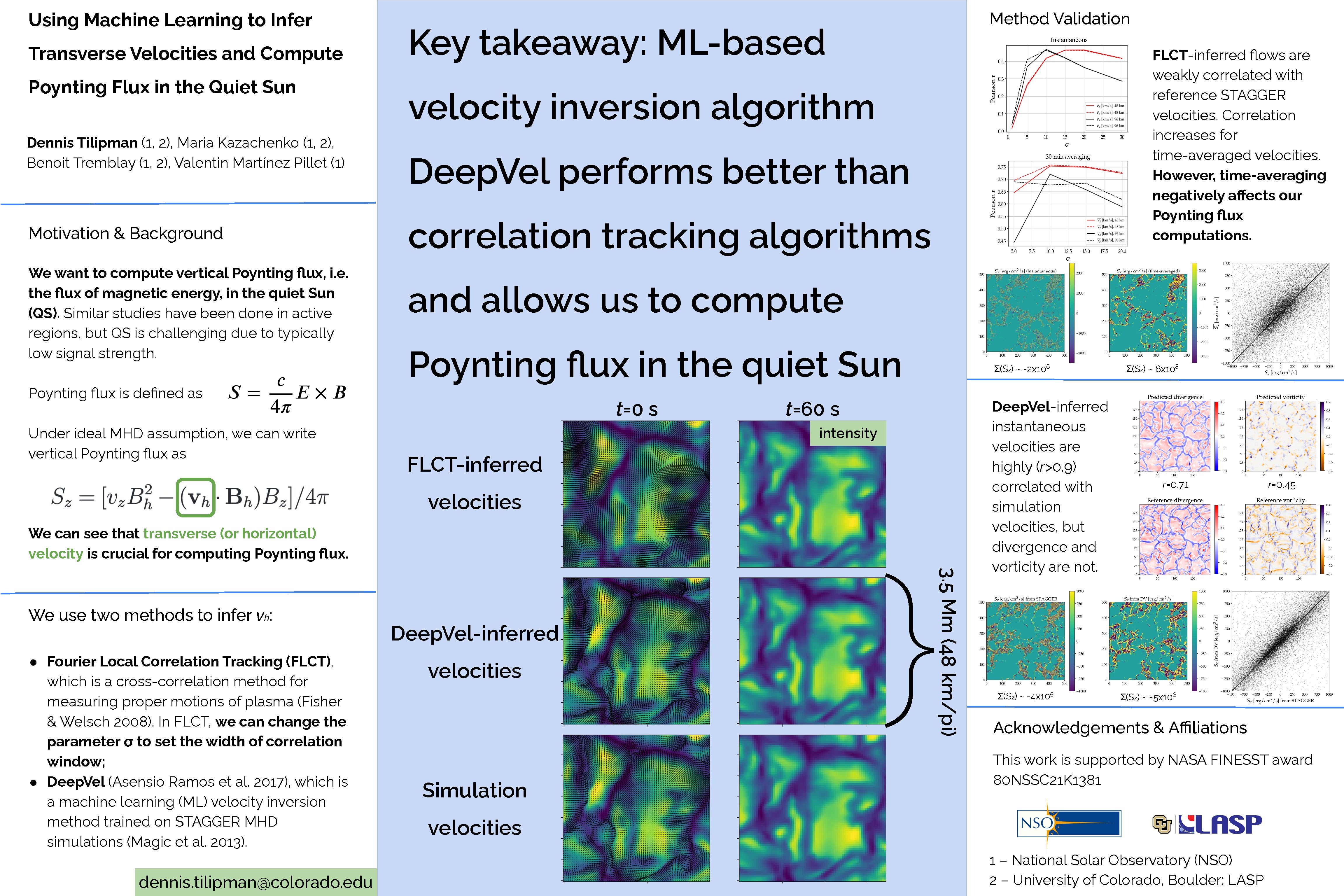Authors: Dennis Tilipman (University of Colorado, Boulder / LASP / NSO), Maria Kazachenko (University of Colorado, Boulder / LASP / NSO), Benoit Tremblay (University of Colorado, Boulder / LASP / NSO), Valentin Martínez Pillet (NSO)
Poynting flux is the flux of magnetic energy, and as such, we can use it to describe both the amount and the nature of magnetic heating occurring at different heights in the solar atmosphere. Quantitative studies of Poynting flux are particularly useful, but so far most have been restricted to regions of the Sun where magnetic fields are well in excess of what is observed in the Quiet Sun (QS).
To find Poynting flux, we must determine the full vector of velocity and magnetic fields. While Doppler velocity can be inverted easily from spectral data, transverse velocities inverted from continuum images depend heavily on the inversion method used. We have explored two methods for obtaining transverse velocities: Fourier Local Correlation Tracking (FLCT), and a machine-learning approach DeepVel.
In this work, we discuss the advantages and limitations of the machine-learning approach to velocity inversions and compare it to FLCT. We find that DeepVel consistently outperforms FLCT when recovering small-scale velocity fields in simulated QS data. These results have direct implications for our ability to accurately invert transverse velocities in high-resolution images of QS, such as what we expect from the DKIST VTF instrument.


